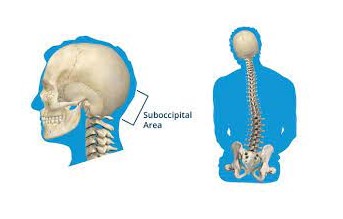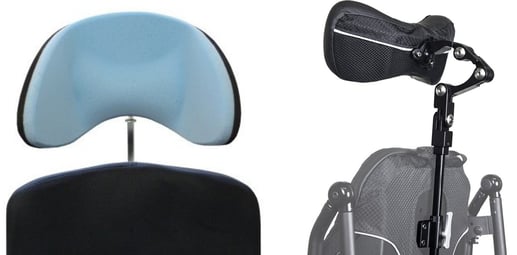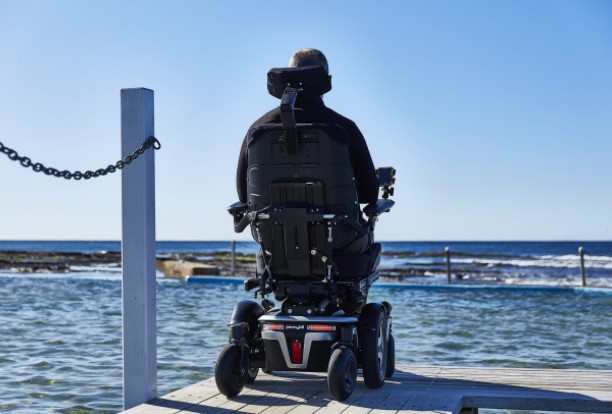When prescribing a wheelchair and seating system there is usually discussion on what are blanket branded as accessories When we look to the definition of an “accessory” we find:
NOUN - a thing which can be added to something else in order to make it more useful, versatile, or attractive. "a range of bathroom accessories"
synonyms: attachment · extra · addition · add-on · retrofit · adjunct · appendage · appurtenance · (additional) component · fitment · supplement.
By definition we could consider headrests and laterals as accessories, but how well will the seating system work with asymmetrical postural needs without these components? Whilst a cup holder is an addition that is useful and potentially versatile it’s not part of the seating outcome so much as an accessory that aids functional independence. There is an array of solutions that could assist in the task of carrying a drink from different accessories through to task adaptation. However, when we consider seating requirements it can create confusion when we use this wording accessory - especially when we are justifying equipment applications for a reader that may have little or no clinical experience. It is important to consider the language we use when articulating needs and using clear clinical justification for all the essential components of the solution.
Postural supports should not be seen as merely useful add ons but as a fundamental part of the overall solution.
The seating system
With the increased images of end users in new equipment flooding some social media platforms we often see some unique and amazing modifications and configurations of AT solutions, but it also highlights some frequent and common configurations that have a cookie cutter feel to them. Of course you cannot know the background, history, assessment findings or goals for these images, they are just moments in time caught on camera but it does highlight some fundamental oversights commonly seen in the prescription process. Let us take the backrest for example. Most manufacturers offer a selection of back heights within the selected style, this can be further configured with how and where it is mounted onto the wheelchair. The back height is particularly crucial when identifying functional use such as for an active self-propeller or in a tilt in space chair. I have seen numerous images of children in active user style manual wheelchairs with back rests at shoulder height or higher. This configuration can have a negative impact on the child’s functional ability and the development of an effective push stroke. We want to provide support when required but also enable freedom for function. Some of these set ups are also utilising shoulder harnesses and when the back height is not inline with the shoulder you cannot achieve the appropriate line of pull. In NSW Australia I have seen many backrests set up and integrated into the function of the headrest. It was a common solution with some population groups through various custom seating clinics. However from my experience these were only as effective as the contouring and materials used, for individuals with postural positioning requirements the ability to provide angulation and appropriate support it is tricky to achieve when extending a back support to integrate occipital support. And this brings us back to Accessories vs Postural supports…is a head support an accessory or a crucial part of the solution?
Headrests
When prescribing any seating component, we are essentially matching needs identified from the assessment to product parameters that provide points of control or forces that will support those needs. As such, identification of a headrest should be part of the initial postural solution rather than viewed as an extra add on at the end. What do we need to consider when identifying a potential head support?
A properly configured and positioned head support is an essential component of wheelchair. The position of the head can affect common activities and daily functions such as:
- Socialization and communication
- Safe Swallowing
- Respiration
- Attention to Task
- Mobility
The first question to address is around the intended use. Is there a postural requirement to provide support, is it for resting when in tilted position or is it too meet safety recommendations when using the chair as an occupant seat in transport? Each of these reasons will guide the potential solution.
Head Support for postural support
The head position will affect posture and balance just as posture and balance affect head positioning. Poor seating positioning, unbalanced musculature, decreased innervation and neural disruptions can all contribute to head position. Understanding where the head needs to be supported is crucial for best outcomes.

When considering a head support, a posterior head support is usually the simplest and least restrictive, as such this is likely to be an initial consideration. The pad is designed to be positioned in the suboccipital area with the goal to prevent excessive extension, rotation, or lateral flexion.
Other considerations include:
- Address pelvis head and trunk alignment before trying to fit for a head support.
- Remember that head position changes constantly with the slightest body movement.
- Aim to position the pad in the suboccipital area posteriorly and avoid resting on the ear if positioned laterally.
- Consider a head support with lateral, anterior/posterior, height, and angle adjustability, that can support the head posteriorly and laterally.
- Choose head support hardware that has offset capabilities to accommodate a head position out of midline.

Head Support in tilt n Space

It is considered best practice to prescribe a headrest for mobility bases with tilt in space or recline features. It is important to consider the different impact that movement of the users centre of gravity will have on head positioning when utilising these chair features. Ensure it has been set to maximise support in positions required without impeding function in a neutral position.
The head support should not be seen as just an add on; clinical consideration, function and seating principals need to be applied to the clinical reasoning process. A head support should not be a prop for poor positioning or a last minute add on but an integrated consideration.

Tracee-Lee Maginnity
Clinical Services Specialist
Permobil APAC
Tracee-Lee Maginnity joined Permobil Australia in July 2019, as a clinical education specialist. Originally from New Zealand, she graduated Auckland University of Technology with a BHSc (Occupational Therapy) in 2003 and has since worked in various roles related to seating and mobility including assessing, prescribing and educating. After gaining experience as an assessor and prescriber at Seating To Go / Wheelchair Solutions in prescribing for both disability and injury, she moved to Australia in 2011 to take on the Senior Occupational Therapist role in a custom moulded seating service. She then worked in clinical consulting and education roles until joining Permobil.
Tracee-Lee is passionate about maximising functional outcomes with end users and the importance of education within the industry. She has mentored many therapists interested in AT. Her experience includes working with complex postures to achieve custom outcomes. Tracee-Lee is also an international wheelchair rugby classifier where she enjoys the task analysis of wheelchair propulsion and functional capacity identification of athletes.
